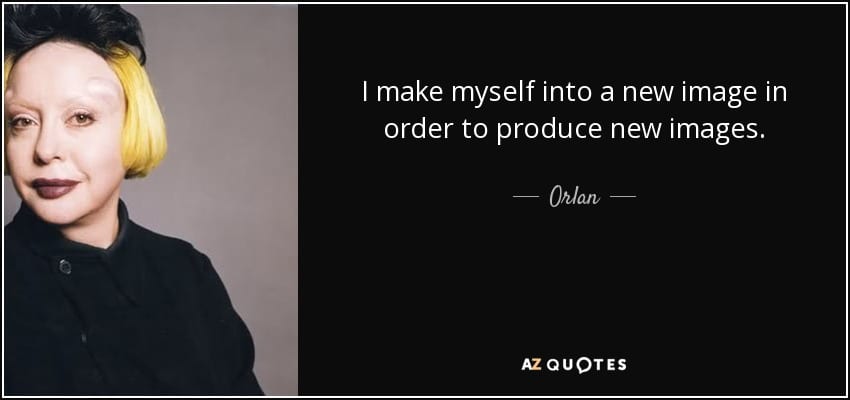We started the dissuasion by saying that today we live few realities at the same time. We should see that as an opportunity as a potential to experience a more complex and layered sense of the real. If the performative creates the reality sense on stage, make things change and evolve than the ultimate performative is the virtual action or the one that happens online. If so than the art must be virtual as well, digital and must adopt the technology and respond.
Than we discussed Immersion. Immersion offers an experimental process that faces information with the materialised body. The materialised body used as host to pass the information. Immersion in performance is nothing new, the Aristotle mimesis is an early example to the audience immersed to the imaginary world.
Cognitive immersion is the suspension of disbelief. The theatrical audience experience can be perceived as an epiphany of virtual reality. So we watched this video: https://www.youtube.com/watch?v=g8EaKP4aNec
It is “Epiphany VR’s first #VRJAM at the Moor Theatre Deli, Sheffield”. A community based mechanism to share experiences. But with the experiencing of this virtual reality in such an intense and overwhelming way there’s still something between the person and the experience. It’s easy to lose one itself in it.
Sensory immersion is consistent with hypermediacy and involves immersion in the medium itself the performance text. It’s aiming towards a bigger and vaster sense of reality. Hypermedia and transparent media are aiming for the same goal- “get passed the limits of representation and achieve the real”. [1]
We watched Bill Violas’s ‘Five Angels of the Millennium’.
(more on that hereà http://www.tate.org.uk/art/artworks/viola-five-angels-for-the-millennium-t11805 )
The medium is the point of doing, the medium is the message (Marshall McLuhan) its not the case of sign-signifier it is the actual thing. It’s an event that is happening and it must be shared with others. (It made me think about that my next piece should be about the belongingness of objects, how we make things belong to us, ow we personalised the objects around us.) We witnessed a manipulated reality. Another video we watched was Janet Cardiff’s 40 part motet (https://www.youtube.com/watch?v=ZHxXAOVZJZ8 ) from May 2013 at AGO. The work is about the medium itself and the audience is constantly aware of it. The lack of sound is as important at its presence. This work is an indication of how vital it is to be event based. That work can continue to another to presenting sculptures that crated during listening to a certain music and examine how that affect the creative process. Every member of the audience get to create his/hers own hypermediality. The audience is constantly in control of the relation he/she has to the work space/time wise and to the composition of positioning the speakers among the Henry Moor’s sculptures. What an artists present his/hers work we also need to ask how it presented. It’s cognitive and sensory at the same time. Another work we watched was Blast’s Theory’s ‘Desert Rain’ (more on that à http://www.blasttheory.co.uk/projects/desert-rain/ ) we understand the world via the media. The immersion of the performance text with the virtual reality creates that hypermediacy reality, a wider sense of reality. It is ficition but it based on reality, fictive and hyperreal at the same time. The work comments on its own hyperrealist aspect of it. Its between reality and made up relity, the art is penetrating the reality and make a complex a mix of realities.
The post human- two positions: Frendrik Kittler and Mark Hansen. It is not the matiral or the matter, the human and the media reduced to 1 and 0, there is another form and exictence that exicts digitally. Kittler suggest that is a netural procces ans hanssen- withot the human this information is remaining 1 and 0, it becomes art only via the human. It embraces manipulated information that represent the value of the humanity.
We can mention in that context Stelarc work on the cyborg and other works (more on that à http://stelarc.org/_.swf and if we are talking about the medium is the message notice the website design) and Orlan’s work (http://www.orlan.eu/portfolio/operation-omnipresence-n7-1993/ ). Orlan is enhancing the body by combining technology in her performances, by sculpturing digital information and doing it live.
We watched ‘Modell 5’ by Granular Synthesis (more on thatà http://v2.nl/events/modell-5-by-granular-synthesis and the video: https://www.youtube.com/watch?v=ATWljMbvVTg )
Stelarc’s Exoskeleton Performance (https://www.youtube.com/watch?v=R2MntBUwUxY )
And Blast’s Theory ‘Can You See Me Now?’ (http://www.blasttheory.co.uk/projects/can-you-see-me-now/ )
Those were good examples of the use of technology to enhace our human abilities, an extension of the identity. Virtual can’t live without the organic .
The last topic we discuss was that performance can happen everywhere. On second life and even in a social network. We were sent to create our own performance on twitter using the hash tag ‘lincolnnoir’. (You can see it on my account à https://twitter.com/jasmineblum)
That session was very eye-opening for me about the new possibilities the world of art has these days and that was the only thing current that is happening in the theatre of the present.
[1]Bolter,Jay David and Grusin, Richard, Remediation- Understanding New Media, the MIT press, 2000 page 55
*photo credit: http://www.azquotes.com/author/76366-Orlan

